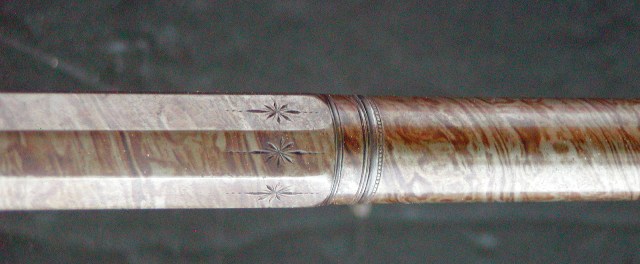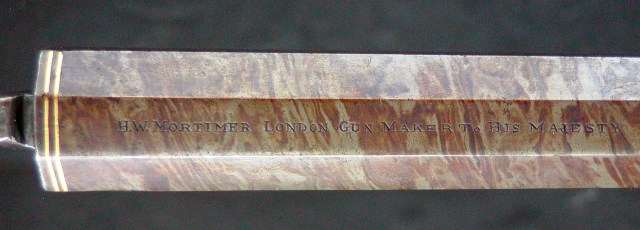Yes, their bluing is a modern process and looks different from the bluing that would have been on the originals...but the gun looks different too so do as you will. I brown with clorox. so easy.
concerning 18th and 19th century barrels:
You'll have to do research if you want more than a thumbnail. Most guns if not left in the white as did the military in the 18th century (they actually used brick dust to polish to bare steel) were blued. It was not the bluing we are familiar with, but the appearance can be duplicated approximately by using Casey's cold bluing solution. I do this. Prep the barrel with 000 steel wool. degrease. then degrease again with denatured alcohol. then degrease yet again with acetone. Apply Casey's with 000 steel wool and do it very quickly and evenly. It only approximates salts bluing and the stuff stinks... always stinks even years later.
Ideally, you would want salts bluing but is an extended process......I have never had the resources or time to try it.
I've got two rifles to construct now. I'm going to use the Brownells Salts Bluing on them. I'm told it gives a more authentic looking blued barrel like the date range of my rifles (1770-1790)
https://www.brownells.com/gunsmith-...ng-salts/nitreblue-bluing-salts-prod1105.aspx
From their sales page:
The process is really quite simple: Heat the salts up to 570° F. - 650° F. (they are NOT dissolved in water, they're used straight). Dip the parts in, watch for the color change. Lower temperatures give a "straw" color like the older Luger parts. As an added bonus, the salts can be used for the drawing operation when heat-treating springs and parts.
Yea, Browning is so much easier, and much much cheaper at a buck or one green frog skin for a bottle of Clorox bleach.




















